
So Abercrombie & Fitch is at it again or I should say has been at it for a  while-practicing bias against those who “don’t look the part” of mainstream White American society. In Tulsa, Oklahoma, a college age Muslim girl who wears a hijab is filing suit against the retail store for not hiring her because she would violate the “Look Policy”.
while-practicing bias against those who “don’t look the part” of mainstream White American society. In Tulsa, Oklahoma, a college age Muslim girl who wears a hijab is filing suit against the retail store for not hiring her because she would violate the “Look Policy”.
What is Abercrombie & Fitch’s “Look Policy”? The policy jargon aside, the bottom-line for this retail store is that hijab’s aren’t “sexy” because mainstream White America doesn’t view them that way and only sex sells.
Now of course Abercrombie & Fitch will not outright say that; though I am sure they will fight to preserve this “status quo” through legal, “objective” and “logical” means. It also seems like the very legal right that is supposed to protect religious freedom will be used to defend Abercrombie’s stance. Title VII of the Civil Rights Act of 1964 prohibits religious discrimination. The 197 amendment to Title VII defines religion to,
“… include all aspects of religious observance and practice, as well as belief, unless an employer demonstrates that he is unable to reasonably accommodate an employee’s or perspective employee’s religious observance or practice without undue hardship on the conduct of the employer’s business”.
 Jasmeet Kaur Sidhu is a 21-year-old aspiring journalist, who currently writes a climate blog for the Toronto Star (she even has The Langar Hall listed as one of her links!). She was recenly chosen as one of the Top 10 College Women for Glamour Magazine (hat tip: Maple Leaf Sikh). The award is usually given out to college students in the US, however, Jasmeet (a Canadian) was picked to be part of the group this year!
Jasmeet Kaur Sidhu is a 21-year-old aspiring journalist, who currently writes a climate blog for the Toronto Star (she even has The Langar Hall listed as one of her links!). She was recenly chosen as one of the Top 10 College Women for Glamour Magazine (hat tip: Maple Leaf Sikh). The award is usually given out to college students in the US, however, Jasmeet (a Canadian) was picked to be part of the group this year!
Jasmeet is the founder of the Peel Environmental Youth Alliance (PEYA), a network of students in the Peel Region working to implement environmental programs in all 220 Peel Region schools. She is currently studying Peace and Conflict Studies at the University of Toronto. Her dream is to become an international journalist.
As a sophomore, Sidhu wrote to the Toronto Star suggesting ways for the paper to improve its coverage. She was promptly asked to join the Community Editorial Board—the youngest member ever—and soon started writing opinion columns for the Star, Canada’s largest newspaper. Sidhu, whose family moved from Malaysia to Canada when she was a baby, has covered everything from HIV/AIDS in Africa to climate change. As the peace and conflict major says, “My mother used to deliver the Star when we first came to Canada. Now her daughter writes for the very same newspaper. Amazing, right?!”
Sotheby’s is having an auction today in New York of South Asian Modern and Contemporary Art including Miniature  Paintings.
Paintings.
Sotheby’s September 2009 auction of South Asian Art features a carefully-curated offering of works by leading modern and contemporary Indian artists, accompanied by an eclectic group of miniature paintings from the Rajput and Punjab Hills courts of northern India, as well as a selection of cutting-edge contemporary art from Pakistan. [Sotheby’s]
Of interest is a 1912 large portrait (approximately 5’x3′) of Guru Gobind Singh Ji estimated at $50,000-$70,000, as well as a miniature of all the Sikh Gurus with Guru Nanak Ji at the center, and a miniature of Maharaja Ranjit Singh on his stallion with weapons, accompanied by foot soldiers.
This large portrait of Guru Gobind Singh Ji, according to a Times of India article, is part of a series of four closely-related paintings depicting Guru Gobind Singh. Apparently each portrait was the inspiration for the next. It’s unclear where in the series this painting belongs or who the painter was, but the last painting in the series is currently on display at Hazur Sahib in Maharashtra and was created by Hari Singh.
Which leads to questions- if the last in the series is at the Hazur Sahib and this is at Sotheby’s, where are the other two? What path have these pieces taken? The works in this collection were probably passed down from one legitimate private owner to another. Perhaps they were commissioned by British officers. I have no evidence of anything otherwise.
But in general, the plunder from wars and violence often ends up on sale somewhere far from its source. The art and artifacts that were lost in Operation Bluestar weren’t inventoried. We don’t even have a way of identifying lost or stolen art in order to make a claim that it rightfully belongs to the community. Perhaps a budding art historian will be interested in a research project… attempting to document artwork remembered as being held at the Darbar Sahib or other sites of looting so that if it shows up on sale, we’ll be able to recover it.
According to a Deputy Director of Sotheby’s, the collector base for miniatures is largely made up of European, British and American collectors. It includes only a small group of NRIs. [TOI] Glad to see that we’re keeping our heritage intact for future generations! 😉
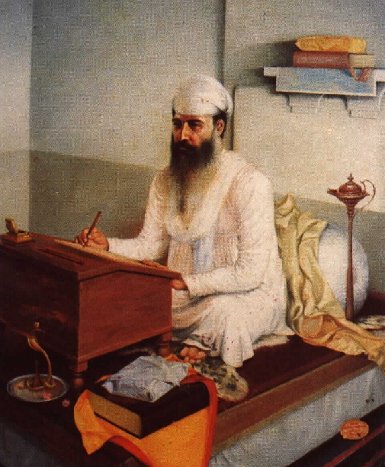 Sikh scholars have a long and proud history from Bhai Gurdas to Giani Ditt Singh and Sardar Kapoor Singh with too many to name in between. Although in more recent times some academics have been seen as controversial in the community, a confident community celebrates academic conferences that provide a valuable forum for those interested to exchange thoughts, discussions, and ideas. This past weekend, one such conference occurred in Berkeley, titled “After 1984” and was an example of the critical importance of scholarly exchange, bringing together such luminaries as Gurharpal Singh, Pal Singh Ahluwalia, Arvindpal Singh Mandair, and many others.
Sikh scholars have a long and proud history from Bhai Gurdas to Giani Ditt Singh and Sardar Kapoor Singh with too many to name in between. Although in more recent times some academics have been seen as controversial in the community, a confident community celebrates academic conferences that provide a valuable forum for those interested to exchange thoughts, discussions, and ideas. This past weekend, one such conference occurred in Berkeley, titled “After 1984” and was an example of the critical importance of scholarly exchange, bringing together such luminaries as Gurharpal Singh, Pal Singh Ahluwalia, Arvindpal Singh Mandair, and many others.
Despite the intellectual brilliance, the meeting point between activism and the academy has always been somewhat uneasy. This weekend allowed such an exchange to occur, but was hardly the focus of the conference. The Jakara Movement is aiming to bridge this gap early next year with its first annual Sikholars: Sikh Graduate Student Conference.
To be held at Stanford University on February 20th, 2010, the organizers are soliciting the community’s help in broadcasting the news of this first conference and calling for proposals. The deadline for abstract submission is NOVEMBER 15, 2009.
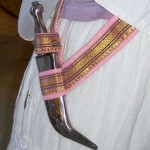 The California legislator has unanimously passed a Kirpan Education Bill (AB 504) through both houses (Assembly & Senate); it is now headed to Governor Schwarzenegger’s desk. This bill, carried by Assemblymember Warren Furutani (D-Long Beach) and other co-sponsors, will only become law if the California Governator signs off on it. AB 504 is a historic bill because it is the only piece of legislation in America that focuses on Sikhs and our kirpan. Furthermore, the bill is being pushed through the law-making process in California-a state with the oldest and largest number of Sikhs in America.
The California legislator has unanimously passed a Kirpan Education Bill (AB 504) through both houses (Assembly & Senate); it is now headed to Governor Schwarzenegger’s desk. This bill, carried by Assemblymember Warren Furutani (D-Long Beach) and other co-sponsors, will only become law if the California Governator signs off on it. AB 504 is a historic bill because it is the only piece of legislation in America that focuses on Sikhs and our kirpan. Furthermore, the bill is being pushed through the law-making process in California-a state with the oldest and largest number of Sikhs in America.
The Kirpan Education Bill (AB 504) requires that all California law enforcement officers be trained on Sikhs and our kirpan. This training would teach California law enforcement officers about Sikhs and the importance of our religiously mandated articles of faith. Sikhs wearing a kirpan are often disrespectfully approached by law enforcement officers and arrested for concealed weapons charges. Often law enforcement officers will pull Sikhs over for minor traffic violations or safety concerns and as soon as officers see the kirpan the situation is escalated into a criminal offense; although the Sikh was only practicing his/her faith. These officers are unaware that the kirpan is a religious mandated article of faith-a gift from our Guru that we wear with care, respect, and love.
Last week a Punjabi Sikh cab driver suffered a gruesome act of hate in the middle of the night in the Bay Area. He was called “Bin Laden”, a “terrorist”, and someone who had come to this country to kill Americans. His attackers where white males working professional jobs in real-estate. Not your stereotypical attackers, but committing a very typical act of hate. Although, the attackers posted bail with their money; the injured cab driver can not work to provide for his family.
We have laws to protect the attackers, but who is protecting the taxi-cab driver? How is it possible that assaulting a taxi cab driver is not a felony in every American city? Taxi cab drivers have one of the most dangerous jobs because of the environments in which they transport clients and how money for service is exchanged. They never know the character of the person they are picking up or if he/she will have enough money to pay. They function off the assumption that they won’t be attacked and their client will pay them. Otherwise, they could not make a profit in this business. They can’t let their fear overtake them.
At a recent conference, “Driving For The Future”, a taxi cab workers alliance in the Bay Area called United Taxi Cab Workers, announced that they are working towards a bill of rights. The Asian Law Caucus is working closely with this group. The bill of rights would demand, for example, that attackers suffer more severe penalties and there be a safety-net of benefits to help cab drivers who have been assaulted. In an industry employing large number of immigrant men who are not fluent in English; the need to legally protect taxi-cab drivers’ rights is very important. We need to encourage Punjabi Sikh taxi cab drivers to participate in this alliance to make sure their needs are protected.
It might partly be the scarcity of female voices and public female faces in the Sikh community that makes Nikky-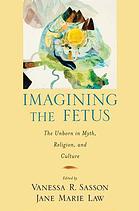 Guninder Kaur Singh’s so distinctive and refreshing. But in addition to her position as one of the few public female voices in the Sikh community, her original and creative work is really what makes Ms. Kaur-Singh so refreshing. As we have discussed in the past, in the context of “Relocating Gender in Sikh History,” the vast majority of Sikh history has been written by men. And thus, despite their best intentions, for the most part, women’s voice in Sikh history has been non-existent. It is silent.
Guninder Kaur Singh’s so distinctive and refreshing. But in addition to her position as one of the few public female voices in the Sikh community, her original and creative work is really what makes Ms. Kaur-Singh so refreshing. As we have discussed in the past, in the context of “Relocating Gender in Sikh History,” the vast majority of Sikh history has been written by men. And thus, despite their best intentions, for the most part, women’s voice in Sikh history has been non-existent. It is silent.
In this realm of mostly male voices, Ms. Kaur-Singh has taken an original position on a much-needed project: to explore a feminist perspective in interpreting Gurbani. Many translations of Gurbani have been written, some of which are quite good, and others that are quite lacking (in terms of staying close to the feeling of the original shabad and being easily understandable for today’s audiences). One of the most popular translations today, if not the most popular, is Sikhi to the Max. It’s heavily used in gurdwaras, at weddings, and by individuals at home. And in this translation, the divine is interpreted as He/Him/Lord. Not only is this archaic, it creates a framework of masculinity that limits our understanding of Waheguru. The Sikh conception of gender embraces as well as goes beyond gender.
In a piece we discovered recently, Ms. Kaur-Singh contrasts current practices of sex-selective abortion with the place of the feminine within Gurbani. In a chapter of “Imagining the Fetus: The Unborn in Myth, Religion, and Culture,” Ms. Kaur Singh orients readers with the history of sex-selection in Punjab. She then goes on to show how Gurbani holds the power to turn today’s practices on their head. In a few short pages, we are treated to a celebration of the feminine, reminded that our spirituality can focus on our source (the physical allegory of which is the mother) rather than its current infatuation with the end, and given a gender-neutral interpretation of excerpts of Gurbani which resonate as closer to a truer meaning than some other more widely used interpretations today.
East coasters and others with expendable income: the Sikh Art & Film Foundation is bringing you the 2009 International Film Festival to be held at the Asia Society and Museum.
The Festival will kick off on Friday September 18th with 3 films (My Mother India, Flying Sikhs – A History of Sikh Fighter Pilots, and Nineteen Eighty-Four and the Via Dolorosa Project). The night ends with a party at Asia Society’s Garden Court. The Festival continues on Saturday with 4 documentaries (A Warrior’s Religion
Not Every Time…, Turbanology, Who Do You Think You Are – Meera Syal) and 6 short films (Battle of Chillianwala – The Waterloo of India, Bhangra Generation, Prisoner’s Song, Street Smarts, turBAN, and
Unravelling). Saturday concludes with the Heritage Gala After Party at Leela Lounge. Mira Nair will be honored and $15,000 in cash will be awarded to filmmakers.
A pass to all above events is only $45. Buy your tickets before they sell out!
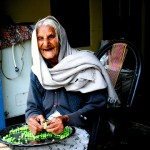 Often times the elderly are considered “high-cost” because they take money out of American system. They are seen as a “liability” because they withdraw medicare and social security benefits. Foriegn elders are similarly viewed as a group that “takes” through government benefits, but is not expected to serve the American system for very long.
Often times the elderly are considered “high-cost” because they take money out of American system. They are seen as a “liability” because they withdraw medicare and social security benefits. Foriegn elders are similarly viewed as a group that “takes” through government benefits, but is not expected to serve the American system for very long.
However, in a recent study at the Center for Intergenerational Learning at Temple University, scholars found that “older immigrants are not inert drains in the U.S. system but an invisible force of community contributors in the United States”.
The study found that immigrant elders contribute to community cohesion by playing leadership roles in families. Also, their sense of interconnectness, rooted in religious and cultural values, forces them to look out for the collective good. They are also a good source for motivating the younger generation to support community members.
It used to be the case that women who came to the US as dependents on their husbands’ immigration status were 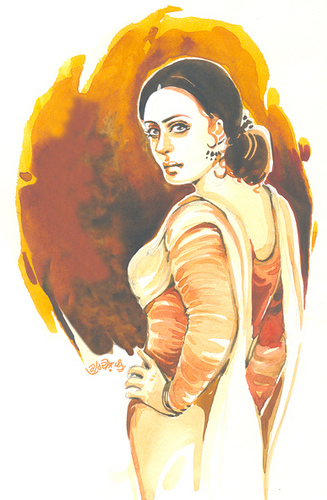 sometimes caught between a rock and a hard place. In cases where one spouse was abusive, the other spouse wouldn’t leave the relationship for fear of losing their immigration status and being sent back to their original country. If they returned to their original country empty handed and without their spouses, they would be perceived as failures. And so, many women have just endured extremely abusive relationships.
sometimes caught between a rock and a hard place. In cases where one spouse was abusive, the other spouse wouldn’t leave the relationship for fear of losing their immigration status and being sent back to their original country. If they returned to their original country empty handed and without their spouses, they would be perceived as failures. And so, many women have just endured extremely abusive relationships.
One option that has been available if the abuser is a permanent resident or a US citizen is a self-petition under the Violence Against Women Act. But this wasn’t available if the abuser was in the US on a temporary visa, as many immigrants initially are, or to women outside the US.
Thus, a recent development in asylum law has the potential to open a door to safety for at least some women who are most seriously abused in domestic violence. To qualify for asylum (or refugee status), one must have been a victim of persecution, or have a well founded fear of persecution based on their race, nationality, religion, political opinion, or “membership in a particular social group.” Before this summer, women who were victims of horrendous domestic violence were not recognized as a particular social group, though the issue has been argued for 14 years in a battle to allow battered women to seek asylum in the US. [link]
The government’s prior position under the Bush administration was illustrated in the case of R-A-, a woman who suffered horrific violence at the hands of her husband, a former soldier of the Guatemalan army. She was kicked, whipped, and beaten unconscious, nearly had an eye pushed out, was repeatedly raped, sodomized, threatened with machetes and guns, dragged by her hair, and had windows and mirrors broken on her head. [source 1, 2]. The Guatemalan police refused to help each time she went to them, deciding that hers was a domestic matter. RA fled Guatemala and her husband, seeking asylum in the US.
Blogged by: sikhpulse
The Christian community is confronting the development of the “Sixth American:” those individuals who do not exist in or identify with any particular space and ultimately congregate together. These integrated congregations are hopeful signs that the elements of discrimination and racism which infiltrated most churches over the last two centuries are slowly being eradicated.
Strangely enough, Sikh-Americans aren’t evolving in the same direction. In less than fifty years, Sikh-Americans have (get this) provided an anti-model for our adopted culture by dividing into self-identifying congregations, sects and denominations!
This may in part be explained by our natural connection to our social networks. Like members of other faiths, we choose to go to a place of worship that is attended by our families. We go where our friends attend. We go where our language is spoken. We are segregated by whether we are brand-spankin-new-citizens or third-generation Sikh Americans. We are separated by our interests and our jobs.
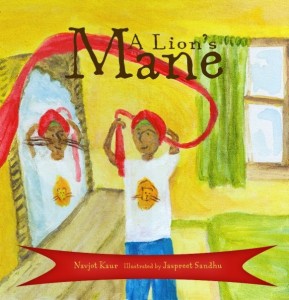 African American publishing houses were born out of a need – the need to fill a void in the industry. Bookshelves needed to share stories of their struggles and to give children a stake in their evolving identities. In turn, they gave rise to a new generation of diverse voices, with Asian-Pacific and Latino publishers following suit. They all have the same goal – to represent stories of their respective communities and give readers some authenticity and a sense of belonging. Now, consider this, how often did the covers of the books you read as a child have children who looked like you? Did these children’s books offer you a sense of belonging or importance? As our children enter into such a global community, it is clear that having access to authentic literature representing their heritage can only help ease the numerous challenges of peer pressure and to elevate self-esteem. Literature is perhaps the strongest avenue to enable us to realize our commonalities while teaching us about the idiosyncratic nature of one another.
African American publishing houses were born out of a need – the need to fill a void in the industry. Bookshelves needed to share stories of their struggles and to give children a stake in their evolving identities. In turn, they gave rise to a new generation of diverse voices, with Asian-Pacific and Latino publishers following suit. They all have the same goal – to represent stories of their respective communities and give readers some authenticity and a sense of belonging. Now, consider this, how often did the covers of the books you read as a child have children who looked like you? Did these children’s books offer you a sense of belonging or importance? As our children enter into such a global community, it is clear that having access to authentic literature representing their heritage can only help ease the numerous challenges of peer pressure and to elevate self-esteem. Literature is perhaps the strongest avenue to enable us to realize our commonalities while teaching us about the idiosyncratic nature of one another.
This is why we are so excited to bring you news about a new children’s book that promises to be “a staple on the shelves of young visionaries.” A Lion’s Mane, being released this month, is written by Navjot Kaur and illustrated by Jaspreet Sandhu. The book is published by Saffron Press, an independent publisher, aiming to encourage children to deepen their understanding of positive self-identity.
In this beautifully illustrated story, young readers journey to cultures around the world to explore the meaning of the dastaar, or turban of the Sikhs. Allusive words placed within a vibrant red dastaar help promote our connections as global citizens and encourage dialogue around issues of identity and kinship. [link]
This book certainly moves beyond the traditional in several ways. A Lion’s Mane brings a global perspective to the often misidentified image of the Sikh turban. It is printed on 100% recycled paper as well as displaying an Eco-Libris badge – 625 trees were planted for the first edition! In addition, a portion of proceeds from the sale of each book will support Seva Canada’s work to restore sight and prevent blindness in children. By shopping at Saffron Press, you really will be contributing to a green and ethical experience! We spoke with the author, Navjot Kaur, about the book and the challenges she underwent to have this story published. After the jump is the book trailer and the author’s first interview. As you view the information, consider this – how important is diverse and multicultural literature on the shelves of every library and school? Did you or do your children have access to this type of literature?
 The US Congress is on their August recess and most have returned to their home constituencies. The atmosphere throughout the country is becoming increasingly polarized over the issue of healthcare. From Palin’s stupidity in labeling Obama’s plans “downright evil” (I almost don’t know what is worse – her attempt to ‘inflame’ sections of the public through such incendiary language or the fact that she is still unaware that there is NO “Obama plan” – Obama has left the process to the branch of the government that is suppose to make laws – the Congressional legislative branch) to Obama’s call for sanity and an end to “outlandish” claims against the process, the partisan hackery has already begun.
The US Congress is on their August recess and most have returned to their home constituencies. The atmosphere throughout the country is becoming increasingly polarized over the issue of healthcare. From Palin’s stupidity in labeling Obama’s plans “downright evil” (I almost don’t know what is worse – her attempt to ‘inflame’ sections of the public through such incendiary language or the fact that she is still unaware that there is NO “Obama plan” – Obama has left the process to the branch of the government that is suppose to make laws – the Congressional legislative branch) to Obama’s call for sanity and an end to “outlandish” claims against the process, the partisan hackery has already begun.
So now I open up a discussion here in The Langar Hall. What we are going to attempt to do is what, unfortunately, is not happening in the rest of the country – an honest discussion. Instead, we have had partisan hacks yelling “Socialism” and others yelling “Fascism” with divisions based on well-known party allegiances, rather than real interests. Will we be successful in The Langar Hall?
Healthcare has been discussed before, but as the topic is taking center stage in the United States, it is an opportunity to use our community capital. In the United States, Sikhs are far over-represented in health services. From doctors to nurses to physical therapists and everything else, we occupy a broad expanse of the health care sector. What are our opinions on health care? What are the opinions of our brothers and sisters from UK, Canada, India and other countries, which have very different systems?
We are seeing how political power is harnessed and used by the Sikh community as we engage in more civic engagement projects initiated by our own Sikh institutions. Civic engagement is not new to our community per se. The first Asian congressman was a Sikh-Dalip Singh Saund. As a child I remember local Sikh business leaders and professionals brought governmental representatives to our Gurudwaras to give speeches. These politicians were later recogonized with a saroopa and more opportunities to address their Sikh constituency at mela award ceremonies that seemed to last longer than the actual musical performances. Often these politicans were talking in English to a community that primarily understood Punjabi. It seemed more like an opportunity for the local Sikh leaders to secure their political connections for their own business interests than really an opportunity to hold politicians accountable to meeting their Sikh constituency’s needs. These political connections were often rooted in the capacity of the Sikh “leaders” to donate money than actually represent the needs of the Sikh community in a sustained way. I don’t want to paint this picture with too broad of a brush stroke because there are some Sikh business leaders, professionals, and activists who did build political power in our community to meet our needs; but they are definitely a minority. These Sikhs pushed along despite all the obstacles of being immigrants, They should serve as inspiration for the new generation of Sikh activists. This new generation needs to remember that we are not breaking as much untouched ground as we sometimes think we are doing. Our work should attempt to build off of those who came before us.
Coblogged by Camille and Reema
This week is Energy and Environment week. The environment has been front page news for a while now and one Sikh group is getting involved. 
Recently, SCORE launched a new initiative called EcoSikh, a project driven towards promoting environmentalism and environmental stewardship particularly in Punjab, but in the Sikh community at large. EcoSikh is the Sikh contribution to a larger project between the UNDP and the Alliance for Religions and Conservation (ARC, a UK-based NGO). UNDP and ARC are funding many religious communities to develop plans and ideas to integrate environmental consciousness into their members’ communities and personal behavior.
The program plans to work through 5 areas it has identified as: assets (using existing skills, time, resources for environmental projects), media/advocacy, eco-twinning (developing relationships of mutual benefit between various Sikh communities by sharing environmental ideas), celebration, and education. Each of the 5 program areas has been rooted in Sikh theology as a reminder of the historic import and connection with the environment in the Guru’s bani. A draft of the plan can be found here.
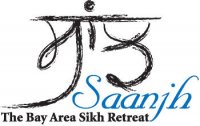
“Saanjh”-the annual Bay Area Sikh Retreat is taking place Thursday, August 27th-Sunday, August 30th at the Monte Toyon campsite near Santa Cruz, California. Share your experiences and connect with other Sikhs through a Guru-inspired sangat. This year’s theme is “Developing a Panthic Vision Towards 2084”. In 2009 we commemorate the 25th anniversary of 1984. When we fast-forward to its centennial where do we want to be as a Panth-a Sikh community? What is our collective vision for 2084? How do we need to develop as individuals and a community in order to heal ourselves and find solutions to our communal problems? Come share your opinions and connect with other concerned Sikhs through a collaborative approach to finding solutions. You will be inspired by diwans, conversations, debates, and laughter. Register by August 3rd to avoid late fees. There is a separate fee schedule for students and professionals. For more information visit www.saanjh.org. If you have any questions, e-mail sawal-jawab@saanjh.org.
As way of background, “Saanjh” began last year by a group of Bay Area Sikhs who were inspired by their personal experiences of engaging with sangats world-wide. They felt there was a need in California to “retreat” from our daily routines into a relaxed space where we could be inspired by our Guru. With this inspiration we could go back to our “real” lives as better engaged Sikhs spiritually, socially, and politically. The focus of the retreat is on learning from our experiences as diverse Sikhs in order to develop a collective vision for our community.
 Throughout the United States, the issue of race and racial profiling has taken center stage – all linked to a local event in Cambridge, MA. It was there, near the Harvard University Campus, that well-known academic, scholar, and public intellectual, Henry Louis Gates Jr. had an altercation with a police officer, Sgt. James Crowley. What may have been a local affair was catapulted to the national stage with Barack Obama weighing in and giving an assessment in favor of Gates, a friend of his.
Throughout the United States, the issue of race and racial profiling has taken center stage – all linked to a local event in Cambridge, MA. It was there, near the Harvard University Campus, that well-known academic, scholar, and public intellectual, Henry Louis Gates Jr. had an altercation with a police officer, Sgt. James Crowley. What may have been a local affair was catapulted to the national stage with Barack Obama weighing in and giving an assessment in favor of Gates, a friend of his.
The reactions that have followed in the last week have been swift and rather predictable. “Conservatives” have come to the defense of a hardworking cop, who was just trying to do his job, while Gates is a pampered black elitist, always ready to “play the race card”; “liberals” concerned with civil rights see Gates as another victim of racial profiling. Some have sought a deeper analysis about structural problems in the society we live.
A few articles have delved into understanding the events from both protagonists’ perspective:
Should Gates have realized that you can’t antagonize the police? Should Crowley have understood what it means to suspect a black man of breaking into his own home? Arguments will persist for years.[link]
Still, I believe whatever the merits of the individual case, Sikhs should be paying special attention to the ongoing story.
A nice piece in the Columbia Journalist discusses the challenges incurred by young Sikh men and women as they navigate through their adolescent years. The article tells us of two friends, Sonu Singh and Manjinder Singh, who have bonded over their love of hip-hop, video games, and (of course) girls. However, as the article notes, what sets these friends apart is the fact that while Manjinder chooses to keep his kesh, Sonu plans to grow his hair and wear a pagh later on in life.
Sonu and Manjinder embody a larger tension within the Sikh community – the internal dilemma among children to remain true to their faith while still fitting in with their peers. After the terrorist attacks of September 11, 2001, some Sikhs simply do not want to stand out. Incidents of harassment and discrimination towards Sikhs students have increased dramatically since then…
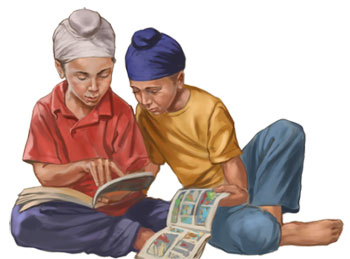 The article talks about the various cases of harassment and bullying which have taken place in New York City schools. The Sikh Coalition has stated that almost half of students who wear paghs have experienced physical violence in school. Yes, half! While bullying affects children of all ethnic groups, it is clear that Sikh children feel especially vulnerable. In addition, many young Sikh children don’t feel that they are adequately equipped to deal with harassment targeted at their physical appearance.
The article talks about the various cases of harassment and bullying which have taken place in New York City schools. The Sikh Coalition has stated that almost half of students who wear paghs have experienced physical violence in school. Yes, half! While bullying affects children of all ethnic groups, it is clear that Sikh children feel especially vulnerable. In addition, many young Sikh children don’t feel that they are adequately equipped to deal with harassment targeted at their physical appearance.
Oregon recently passed a bill to repeal its ban on religious attire in the workplace, a policy adopted 100 years ago as part of anti-Catholic backlash. However, it let stand an exception to this act — specifically, it continues to ban wearing “religious attire” in classrooms. Its decision strikes against its stated policy goal: to ameliorate religious discrimination in the workplace.
Religious affiliation is a protected class under U.S. equal protection (14th Amendment) and Civil Rights law, but it is subject to a much more lenient standard of review than other forms of discrimination (e.g., race). In 1980, the Supreme Court upheld Oregon’s workplace ban. The Legislature supports its ban by claiming that it is designed to avoid proselytization in the classroom. This is both misguided and continues to advance discrimination.
 The list of 1984-inspired Sikh propositions continue to grow. In the past, I have mentioned more than my fair share and last week my fellow langa(w)r-iter added one more. Here is another great proposal.
The list of 1984-inspired Sikh propositions continue to grow. In the past, I have mentioned more than my fair share and last week my fellow langa(w)r-iter added one more. Here is another great proposal.
This year marks the the creation of two great scholarships by the Jakara Movement. One aimed at high schoolers: “Bhai Amrik Singh Scholarship for Excellence” and the other at junior/community college transfers: “Bibi Upkar Kaur Scholarship for Excellence.” In this 25th year of commemoration of the 3rd Sikh Genocide (Ghallughara), these are the institutions that will last. The Scholarships provide national recognition and financial support for students, who exhibit outstanding academic strength as well as exceptional service to Sikhs and the American community at large.
The organizers describe them:
In honor of two pioneers of Sikh activism, Bibi Upkar Kaur and Bhai Amrik Singh’s exemplary dedication to the Sikh community are illustrated by their association with Sikh student organizations. Both were presidents of their respective Sikh student organizations and lived by their convictions of striving for excellence through dedication and perseverance in all aspects of their lives. Both applied this conviction to their educational pursuits, being accomplished students, and supportive of other students in pursuing academic excellence and achievement as well. They believed that as Sikhs, students had the obligation to not only excel in education, but also to carry the responsibility of being of service to the community. Bibi Upkar Kaur and Bhai Amrik Singh gave their lives for this very cause. Hence, these distinguished awards reflects Bibi Upkar Kaur and Bhai Amrik Singh’s legacies of commitment to academic excellence and service to the Sikh community as well as the greater community at large.
